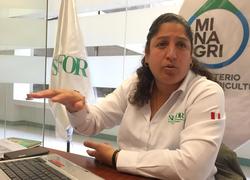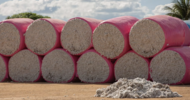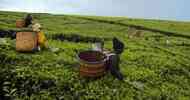Illegal Deforestation Monitor | 10 October 2016
Illegal cocoa and palm plantations cause $111m damage in Peruvian Amazon
Illegal cocoa and palm plantations cause $111m damage in Peruvian Amazon
The head of Peru’s National Forest and Wildlife Service has revealed that deforestation by two illegal cocoa and oil palm plantations in the Peruvian Amazon has caused US$111 million of damage.
Fabiola Muñoz told the investigative reporting outlet Ojo Publico that a technical report had been submitted to the environmental prosecutor, detailing the harm caused by Cacao Peru Norte in Loreto and Plantations de Ucayali in Ucayali.
The National Forest and Wildlife Service (SERFOR), of which Muñoz is executive director, falls under the Ministry of Agriculture and is the highest authority in the management of forests in Peru.
Cacao Peru Norte is alleged to have established its cocoa plantation in a Forest Production zone, which cannot legally be used for agricultural purposes. Similar analysis has shown that Plantations de Ucayali carried out illegal deforestation in order to cultivate palm oil.
In 2015 the Environmental Investigation Agency published a report, Deforestation by Definition, which made the case that the Peruvian government was allowing plantation companies to illegally destroy primary forest by employing “a skewed interpretation of the legal definition of forests”.
Ojo Publico’s interview with Muñoz is translated and reproduced below. The original Spanish version can be viewed here.
Ojo Publico (OP): There are several accusations of deforestation linked to companies that promote the cultivation of oil palm. What is SERFOR doing about this?
Fabiola Muñoz (FM): We have denounced this issue together with the Ministry of Environment and the environmental prosecutor. There have been great and sustained economic losses from deforestation caused by palm companies in Tamshiyacu and Ucayali. Remember that SERFOR was created in 2014, just when the rate of deforestation in the country peaked. So to say that SERFOR is responsible for this is absolutely illogical. At this time of year, 74,000 hectares have been deforested, having had 177,000 and 172,000 in previous years.
OP: Some regional governments are allowing the entry of oil palm plantations in forest areas.
FM: Fighting with the regions is not the solution. We have to be capable so that these regions are able to identify a sustainable forest management, agroforestry system and a productive forest. Regarding oil palm our position is very clear, we do not have to continue losing forests to promote agriculture and agricultural exports. We have several deforested areas where these agro-industrial activities could be developed.
OP: But does the Ministry of Agriculture (MINAGRI) have an updated map that identifies precisely where these areas suitable for palm are?
FM: Yes, it does. The MINAGRI was working on the issue since [the UNFCCC] COP and we have been working closely with the Ministry of Environment on a national strategy on forests and climate change. 500,000 deforested hectares have been identified, 200,000 of these had studies of soil, and 58,783 have necessary conditions for oil palm.
OP: What actions have been taken to support research by deforestation associated with palm oil?
FM: We sent the prosecutor our technical opinion on forest damage caused by the companies Cacao Peru Norte and Plantations Ucayali companies. In this document an economic valuation of the impacts caused Ucayali and Loreto was made. The report concludes that the impact to the forest heritage of Peru was 220 million Sol in Ucayali and 156 million Sol in Tamshiyacu.
OP: Have you made a similar technical report on complaints against deforestation Palmas Group, the Romero Group in Loreto?
I would be lying if I said yes. I haven’t seen it.














